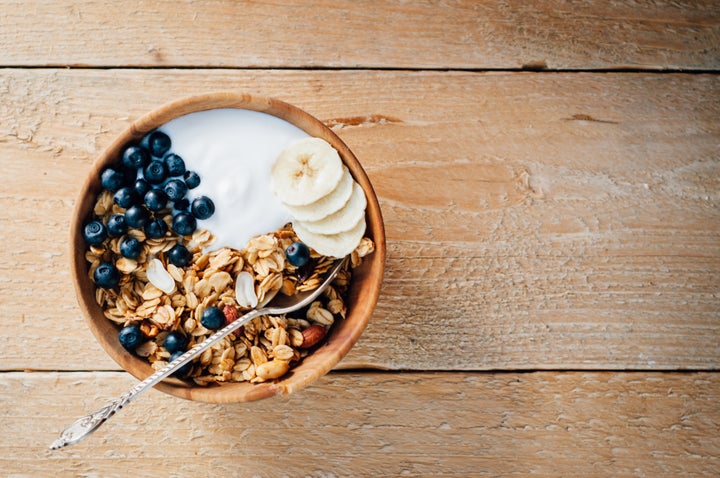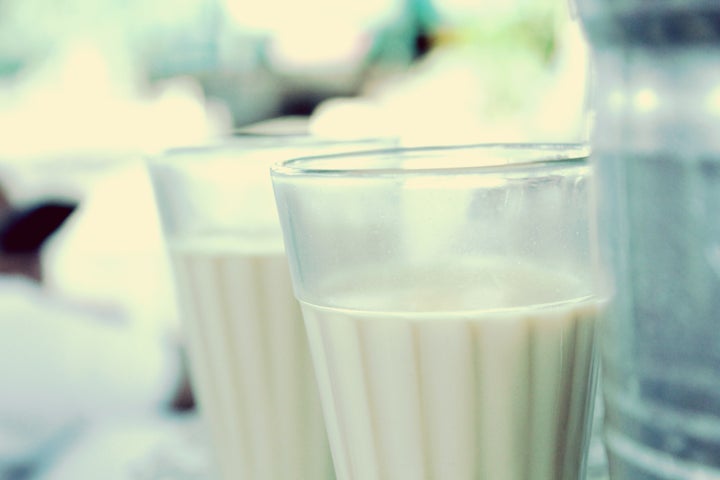Ever since talk around food intolerances stepped into the mainstream, advice on what some of us should be cutting out to reach peak health has abounded.
According to research published by Mintel in 2016, the six months to September 2015 saw 33 per cent of British people buy or eat free-from foods (22 per cent going for gluten-free, 19 per cent dairy alternatives such as plant-based cheese, 16 per cent wheat-free and 16 per cent lactose-free.) We’re buying and eating into ideas – but that doesn’t mean that everything we see on Instagram is legitimate. When it comes to issues around dairy, especially, rumours and half truths are tangled up in reality.
Here’s the myths you probably believe – but shouldn’t.

1. Milk allergies and lactose intolerance are the same
No – they’re different problems with different causes. “A milk allergy is an immune system reaction to the protein in milk or dairy products. This reaction can be severe and is usually diagnosed at an early age,” explains Dietitian Mariëtte Abrahams. “Lactose intolerance is caused by a gene misspelling that can lead to the absence or very little production of the enzyme lactase, which helps to digest dairy and other milk based products.” Two entirely separate issues, so try not to conflate the two.
2. If you’re lactose intolerant, you were born that way
In fact, lactose intolerance often develops later in life, with current NHS guidelines stating that it often appears when people are between 20 and 40 years old. There are two types of lactose intolerance: primary and secondary. In the former, the intolerance is an inherited genetic one, which displays as our diets become less reliant on dairy products as we go from being babies to children. In the latter, the problem develops as a result of a stomach infection or other illness.

3. Free-from lactose offerings aren’t real dairy
Unlike a plant-based swap, milks, yoghurts and cheeses that are free from lactose are not a totally different product. Lactose – the sugar found in dairy products – is what triggers a reaction in people with lactose intolerance. As we mentioned before, this happens in people who lack the volume of the lactase enzyme in their digestive tract. Lactose free products have this removed, but are otherwise an exact match. Straight up: it’s still milk from a cow.
4. Everyone who is lactose intolerant has the same symptoms
We’ve all got unique bodies. As such, everyone with a lactose intolerance will have their own set of symptoms. Some may experience a twinge of stomach upset and nausea a couple of hours after eating ice cream or whatever, while others may experience diarrhea as little as 30 minutes after a flat white.

5. It’s obvious if you have lactose intolerance
The symptoms of lactose intolerance (bloating, cramps, gas, abdominal pain) are easy to mistake for IBS. If you think you have the latter, it may be worth exploring if it could be the former.
6. Any amount of lactose will trigger you
If you are lactose intolerant, you may be able to consume a small amount of the stuff. Trial and error is the only way of doing this, but a slick of butter or a teaspoon of Greek yoghurt may be okay.

7. You can switch to goat’s or sheep’s milk
While goat’s and sheep’s milk have less lactose within them than cow’s, they do still have the sugar. As such, it’s not a good idea to chug back either alternative if you’ve worked out that lactose is an issue for you, as they could still cause trigger problems.
Mariëtte Abrahams was not paid for comment for this feature.